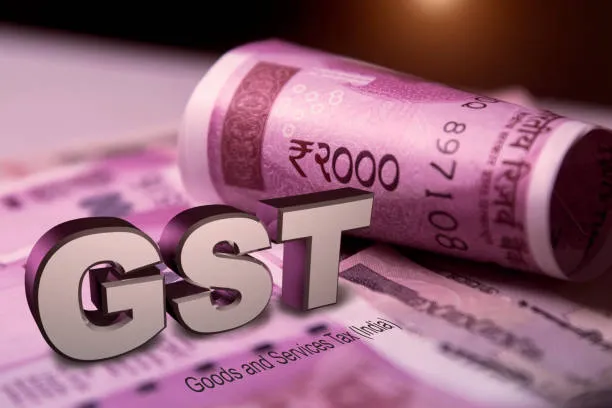10 min read Goods & Services Tax

Understanding GST: A Comprehensive Guide
The Goods and Services Tax (GST) is one of the most significant tax reforms in many countries, including India, where it was introduced on July 1, 2017. It replaced a complex web of indirect taxes with a unified system aimed at simplifying tax compliance, promoting transparency, and reducing the overall tax burden on businesses and consumers. In this blog, we will delve into the details of GST, its structure, benefits, challenges, and its impact on businesses and the economy.
What is GST?
GST is a value-added tax levied on the supply of goods and services at each stage of the supply chain, from production to consumption. Unlike previous tax regimes, GST is designed to be comprehensive, eliminating the cascading effect of taxes where taxes were levied on taxes. It follows the principle of “One Nation, One Tax,” ensuring uniformity across the country.
Structure of GST
GST operates under a dual model, which is divided into three main components:
- Central GST (CGST): Collected by the Central Government on intra-state transactions (within a state).
- State GST (SGST): Collected by the State Governments on intra-state transactions.
- Integrated GST (IGST): Collected by the Central Government on inter-state transactions (between two states) and imports.
For example, if a product is sold within the state, both CGST and SGST are applied, whereas for inter-state sales, IGST is charged.
Tax Rates Under GST
GST has multiple tax slabs to accommodate different categories of goods and services:
- 0%: Essential items like food grains, fresh vegetables, and unprocessed agricultural products.
- 5%: Basic necessities such as packaged food, transportation services, and affordable housing.
- 12% and 18%: Standard rates for most goods and services, including electronics, furniture, and dining at restaurants.
- 28%: Luxury and sin goods like tobacco, luxury cars, and aerated drinks.
Additionally, certain items like petroleum, alcohol, and electricity are currently outside the purview of GST.
Benefits of GST
- Simplification of Tax Structure:
- GST replaced multiple taxes such as VAT, service tax, excise duty, and others, creating a single unified system. This reduces compliance burdens for businesses.
- Elimination of Cascading Effect:
- Under GST, businesses can claim input tax credit (ITC) for the tax paid on purchases, ensuring that tax is only levied on the value added at each stage.
- Encouragement of Formal Economy:
- GST has incentivized businesses to register and comply with tax norms, reducing the informal sector and increasing government revenue.
- Improved Logistics Efficiency:
- The removal of check-posts and reduction in transport delays have streamlined supply chains and reduced logistics costs.
- Boost to Exports:
- GST eliminates embedded taxes in export goods, making them more competitive in the global market.
Challenges of GST Implementation
- Technical and Operational Hurdles:
- The introduction of GST required businesses to adapt to new technology, accounting systems, and filing processes, which was challenging for small enterprises.
- Multiple Tax Rates:
- While designed to accommodate different categories, the existence of multiple tax slabs complicates compliance and creates classification disputes.
- Impact on Small Businesses:
- The mandatory registration and compliance under GST have increased operational costs for small and medium enterprises (SMEs).
- Frequent Changes:
- Regular amendments to GST rules and rates have created uncertainty for businesses, requiring them to constantly update their systems.
- Exclusion of Certain Sectors:
- Exempting petroleum, electricity, and alcohol from GST limits the tax's reach and potential benefits.
Impact of GST on Businesses
Positive Impacts:
- Ease of Doing Business:
- GST has reduced the complexity of managing indirect taxes, enabling businesses to focus more on growth and less on compliance.
- Cost Reduction:
- Input tax credits and the removal of cascading taxes have lowered production costs for many industries.
- National Market Integration:
- GST has removed inter-state tax barriers, allowing businesses to operate seamlessly across the country.
Negative Impacts:
- Initial Compliance Burden:
- Small businesses, in particular, faced difficulties in adapting to the new tax regime and digital filing systems.
- Working Capital Blockage:
- The requirement to pay tax on purchases before receiving input credits has strained cash flows for some businesses.
GST Compliance Process
To ensure compliance, businesses must follow these steps:
- Registration:
- All businesses with an annual turnover exceeding the prescribed threshold must register for GST. This threshold is ₹40 lakh for goods and ₹20 lakh for services (₹10 lakh in certain states).
- Invoicing:
- Tax invoices must comply with GST norms, including details like GSTIN (GST Identification Number), HSN/SAC codes, and applicable tax rates.
- Filing Returns:
- Businesses must file periodic returns (GSTR-1, GSTR-3B, etc.), detailing sales, purchases, and tax liability.
- Payment of Taxes:
- Taxes must be paid electronically through the GST portal.
- Input Tax Credit:
- Businesses can claim ITC for taxes paid on inputs, provided they have valid invoices and their suppliers have filed returns.
GST and the Economy
GST has had a profound impact on the Indian economy:
- Revenue Growth:
- Increased compliance and formalization have boosted tax collections for both central and state governments.
- Economic Efficiency:
- By reducing tax-related inefficiencies, GST has streamlined production and distribution networks, contributing to economic growth.
- Consumer Benefits:
- The elimination of cascading taxes and increased competition have reduced prices for many goods and services.
- Boost to GDP:
- Studies suggest that GST could add 1-2% to India’s GDP by promoting efficiency and expanding the tax base.
Future of GST
As GST continues to evolve, several changes and reforms are expected:
- Inclusion of Petroleum and Alcohol:
- Bringing these items under GST could enhance revenue and reduce the complexity of indirect taxes.
- Simplification of Compliance:
- Introducing simpler filing systems and reducing the frequency of returns could make GST more business-friendly.
- Rate Rationalization:
- Consolidating the multiple tax slabs into fewer categories could further simplify the tax structure.
- Improved IT Infrastructure:
- Enhancing the GST portal and addressing technical glitches will ensure a smoother user experience.
Conclusion
GST is a transformative tax reform that has redefined the way businesses operate and interact with the government. Despite initial challenges, it has simplified taxation, promoted transparency, and contributed to economic growth. As the system matures, further refinements will address existing issues, making GST even more effective. For businesses and consumers alike, understanding GST is essential to navigating the modern tax landscape effectively.

